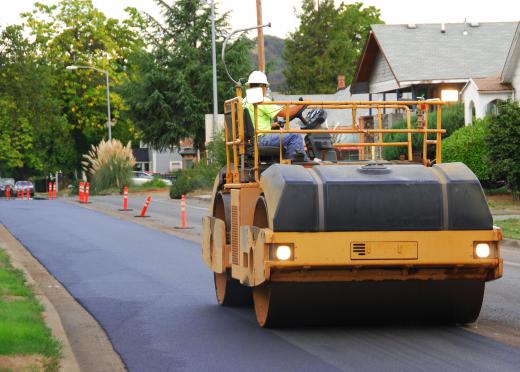A profilograph is a device designed to measure roughness in a surface. Roughness can be calculated in a number of different ways and provides important information about the quality and safety of a surface, as well as its suitability for an intended use. One of the most common uses for profilographs is on pavement such as that found on runways and roads, where unsuitability for use could be a major safety issue.
Originally, profilographs were large wheeled devices pushed manually across the surface. A free-floating wheel would move in response to roughness and generate a profile on a printout, showing how much the surface deviated from a baseline. This style is still in use, but many people prefer to use computerized systems. More modern profilograph designs utilize lasers instead of wheels to measure pavement roughness and can take down a number of other measurements about qualities of the surface as well. Some also take still and video photography to document conditions during the testing.

Computer programs can display the data in a variety of meaningful ways to provide information. This can include graphs showing how the roughness varies over the surface, linked to images of the surface to illustrate what different roughness measurements mean in terms of how the surface looks and behaves. The supplementary data collected by the device can also be used to document more information about the conditions, such as the slope of the surface.
A profilograph test can be used to measure a freshly finished surface to confirm it is within engineering tolerances and will be safe for use. Roughness measurements are also used to assess surfaces to determine if they need work, and they can be used during construction, as well to check on progress. Stored data from different tests can be used to assess weathering rates and compare rates of weathering on the basis of traffic, weather conditions, and other factors. This can be used to compare different construction and maintenance techniques in efficiency studies and to plan ahead for future construction projects.
Profilograph manufacturers provide an array of devices and accessories. Some also offer service contracts. Technicians can travel to service the device, calibrate it, inspect it for damage, and replace any missing or damaged parts. It is also possible for people to hire their own service technicians or to use in-house personnel to maintain their profilographs and other measuring equipment. Regular profilograph maintenance is critical for accurate measurements and reliable data.
Ever since she began contributing to the site several years ago, Mary has embraced the exciting challenge of being a About Mechanics researcher and writer. Mary has a liberal arts degree from Goddard College and spends her free time reading, cooking, and exploring the great outdoors.

